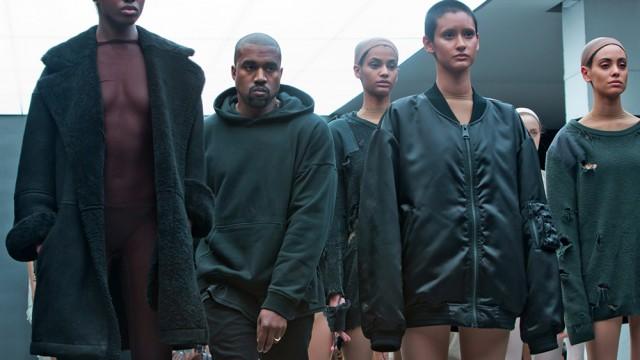
Ask anyone you know about Kanye West and most would agree that he is one of the most polarizing figures in popular culture. His stunt with Beck at the Grammys ceremony was met with negative backlash reminiscent of his incident with Taylor Swift at the 2009 MTV Video Movie Awards, and also managed to drum up more publicity than his Grammys performance itself—a testament to the fact that controversy often overshadows the rapper’s musical accomplishments.
Ten years ago, West was a relative newcomer to the music industry, having just released The College Dropout and Late Registration to critical acclaim. Back then, West struggled to be accepted and taken seriously as a rapper. West—who was turned away by several record companies before College Dropout was produced—rejected the image embodied by hip-hop artists in mainstream rap at the time. West produced albums as grand aesthetic statements that challenged ’90s-era hip hop’s assumptions about toughness and hyper-masculinity—choosing to embrace emotion, themes of materialism and heartbreak, and the oft-maligned Auto-Tune vocal effect.
While Kanye West has shaped the landscape of the hip hop genre within the last decade, he has also been venturing outside of it. Last Friday, West launched his collection, in collaboration with Adidas Originals, at New York Fashion Week. For years, West had been designing clothes with collaborators such as Nike and A.P.C. before debuting his first collection at Paris Fashion Week back in 2011. With mixed-to-negative reception, West has found a whole new set of obstacles and assumptions to overcome.
Staged with Italian performance artist Vanessa Beecroft, West’s military-inspired sportswear collection featured models of all shapes and sizes in flesh-toned stockings and utilitarian pieces. Over the loudspeakers, a recording of West’s voice rallied against the limitations of the industry. “I want people to feel like it’s okay to create and follow what their dreams are and not feel boxed in,” the voice said. “I want people to feel like awesome is possible.”
https://www.youtube.com/watch?v=TEYaLzRDyIA
Feeling boxed in is something to which West has grown accustomed since his career beginnings in the music industry. In reception to his Adidas line, legendary fashion icon and New York Fashion Week creator Fern Mallis told the New York Post, “I’m kind of over Kanye. I mean, I’m not a fan of his music, and the attitude and the agenda is not my style.” Other members of the industry’s elite echoed this sentiment, slamming his collection as “uninspired” and derivative of previous designers.
Fame itself is something to which West attributes his hardships in fashion. In response to Mallis, West took to Twitter and credited his fame as the reason for being overlooked in the industry. True to character, West defended his collection and told Mallis that he will persevere in the design world despite her criticism. “I don’t call myself a designer as I was not allowed to go to Saint Martins—because I was too famous by the time I realized I wanted to design,” West said. “Fame is often looked down upon in the design world, so it’s actually been something I had to overcome.”
While Kanye West claims that he is “too famous” to be taken seriously as a designer, fame itself is responsible for advancing West and his family in the fashion world. While models often have to claw their way through years of casting calls and fittings to walk at NYFW, Kendall Jenner walked at Marc Jacobs, Alexander Wang, Donna Karan, Vera Wang, Michael Kors, and Oscar de la Renta despite only being signed in 2013. Karl Lagerfeld, creative director of Chanel, also picked Jenner for his show in Paris. Meanwhile, the front row at Kanye West’s show was worthy of the Grammys, including Beyonce, Jay-Z, Kim Kardashian, Rihanna, and Diddy alongside Vogue editor Anna Wintour.
That’s the problem with West making his mark in the fashion world. While he continues to blame fame for derailing his efforts as an aspiring designer, fame itself is what gave West and his family members a leg into the fashion world in the first place. What his collection with Adidas has shown is that West has a lot to prove in terms of distancing himself from his reputation as a performer—similar to how he had to unravel assumptions about hip hop in the early 2000s. The question isn’t whether or not West is too famous—it’s whether his fashion designs and creativity will live up to the image he has built up for himself. We’re all just on the edge of our seats waiting to see if the self-declared “Warhol” and “Steve Jobs” will live up to the name he gives himself.
Featured Image Courtesy of Style.com